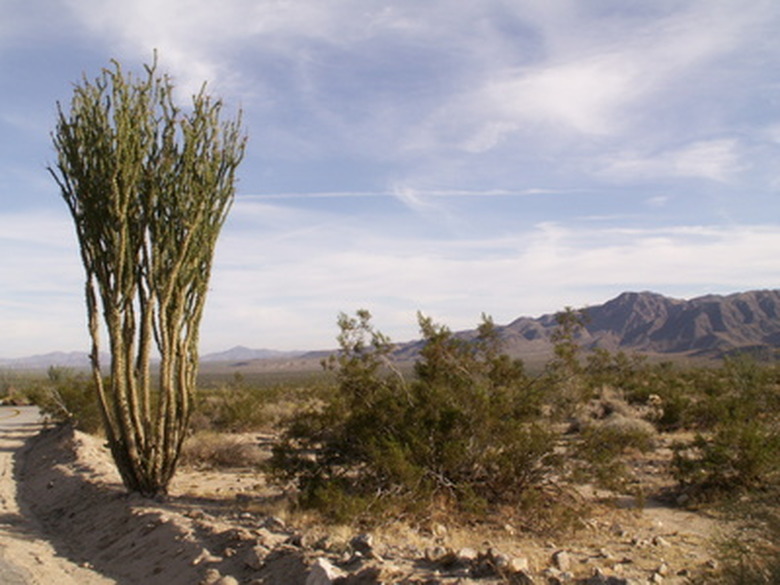If you imagine the desert as a barren wasteland, you will be surprised to learn that deserts are home to a variety of plant life, from the prickly cactus to rare desert flowers that bloom after rainfall. Because desert plants cannot survive without water, they have developed extreme coping mechanisms to thrive in the dry desert climate.
History
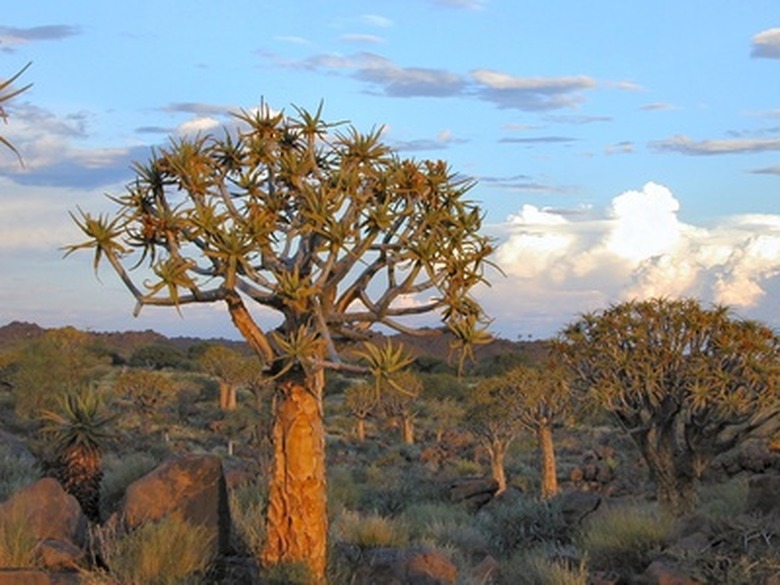
Desert plants have a rich evolutionary history. According to evolutionary biologists Erika Edwards and Michael Donoghue at Yale University, Pereskia cacti, which have stems and leaves, were the first plants to store water 20 million years ago. Many desert plants have also supported human life, such as the kokerboom, an aloe plant that looks like a tree and stores water in its leaves. Bushmen in Africa used to hollow out its branches and use them as quivers, or kokerboom, to hold their arrows.
Seasonal Blooming
Several adaptations have enabled desert plants to thrive in the heat and dryness of their habitats. Some plants will only blossom on the rare occasions when water appears in the desert, lying dormant the rest of the year. Others only grow during rainy seasons and have short lives, such as the desert sand verbena, which grows and blooms with bright purple flowers after rainfalls. Its seeds can remain in the ground for months or years before growing after the next rainy season.
Roots
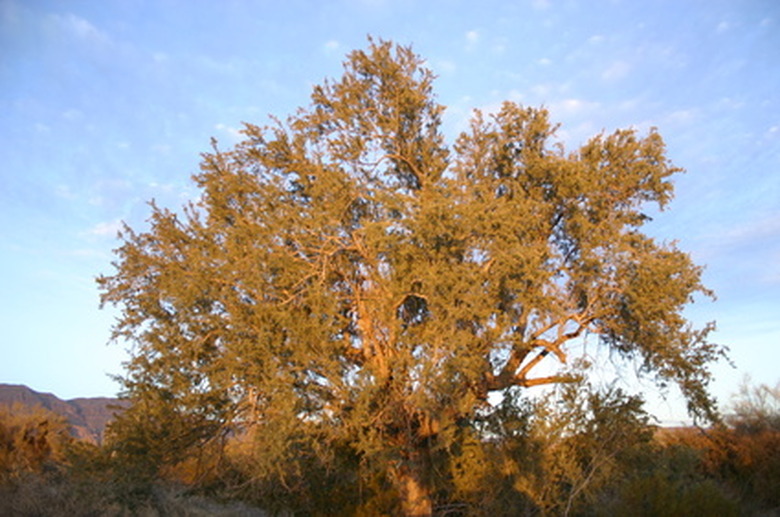
Some desert plants called phreatophytes have long roots that dig deep into the ground to find water. The mesquite tree has roots longer than those of any other desert plant, reaching lengths of 80 feet, according to Desert USA. Creosote bushes have double root systems that draw water from deep in the ground as well as from rainfall at the surface.
Water Storage
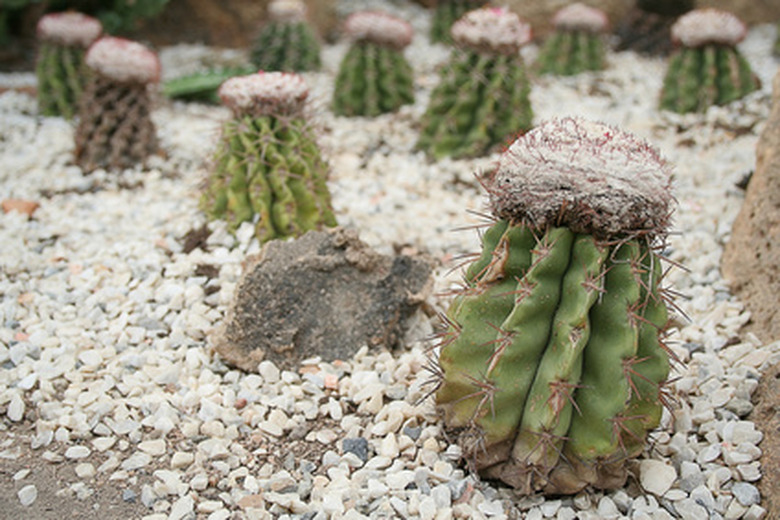
Plants called xerophytes store water so they can live for long periods of time without rain, with the cactus being the most famous example. Most plants open their stomata, or pores, during the day to gather carbon dioxide and use sunlight to convert it into sugars. But the cactus only opens its stomata at night, when it will not lose its moisture in the process, and saves the carbon dioxide to convert into sugars when the sun comes out.
Desert Flowers
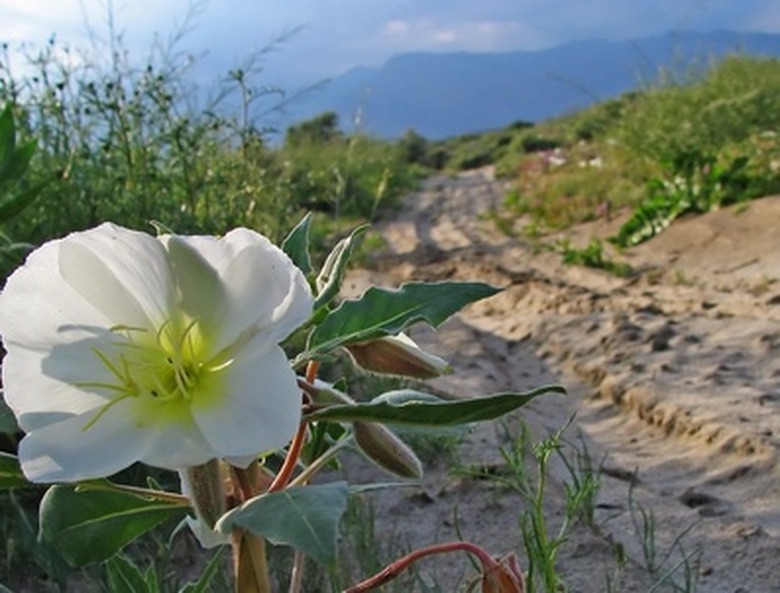
Although desert plants are often dimly colored shrubs and cacti, many deserts come alive with colorful flowers for parts of the year. These include the desert lupine, desert marigold, fairy duster, twist flower and larkspur, among others. Desert flowers are part of a complex ecosystem, blooming after rare wet spells and attracting bees for pollination.

